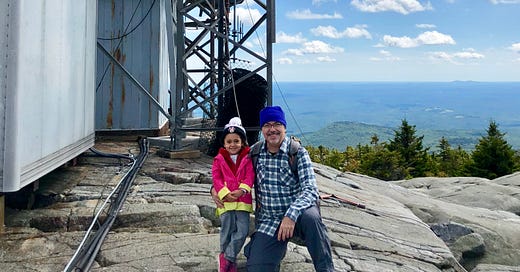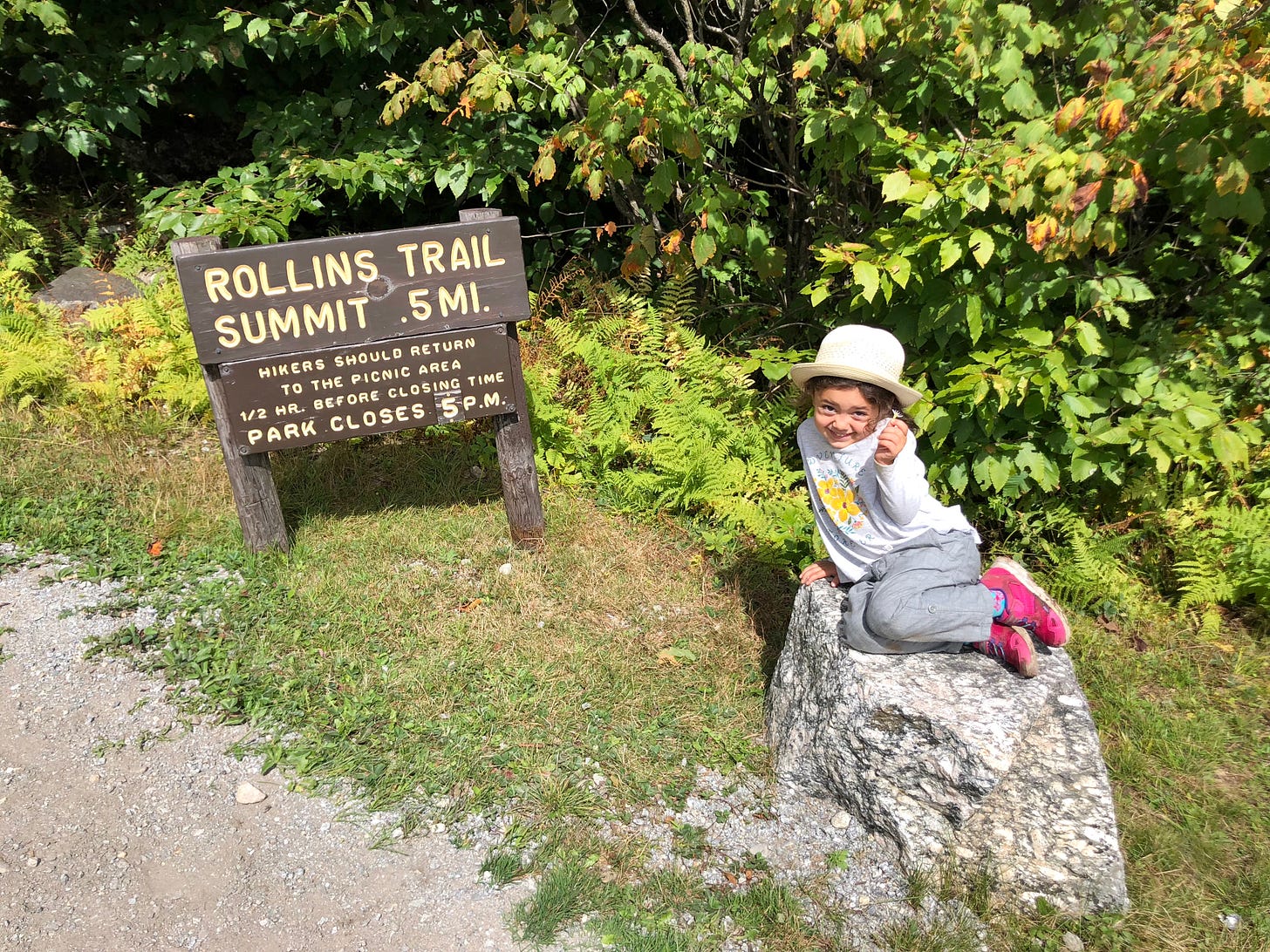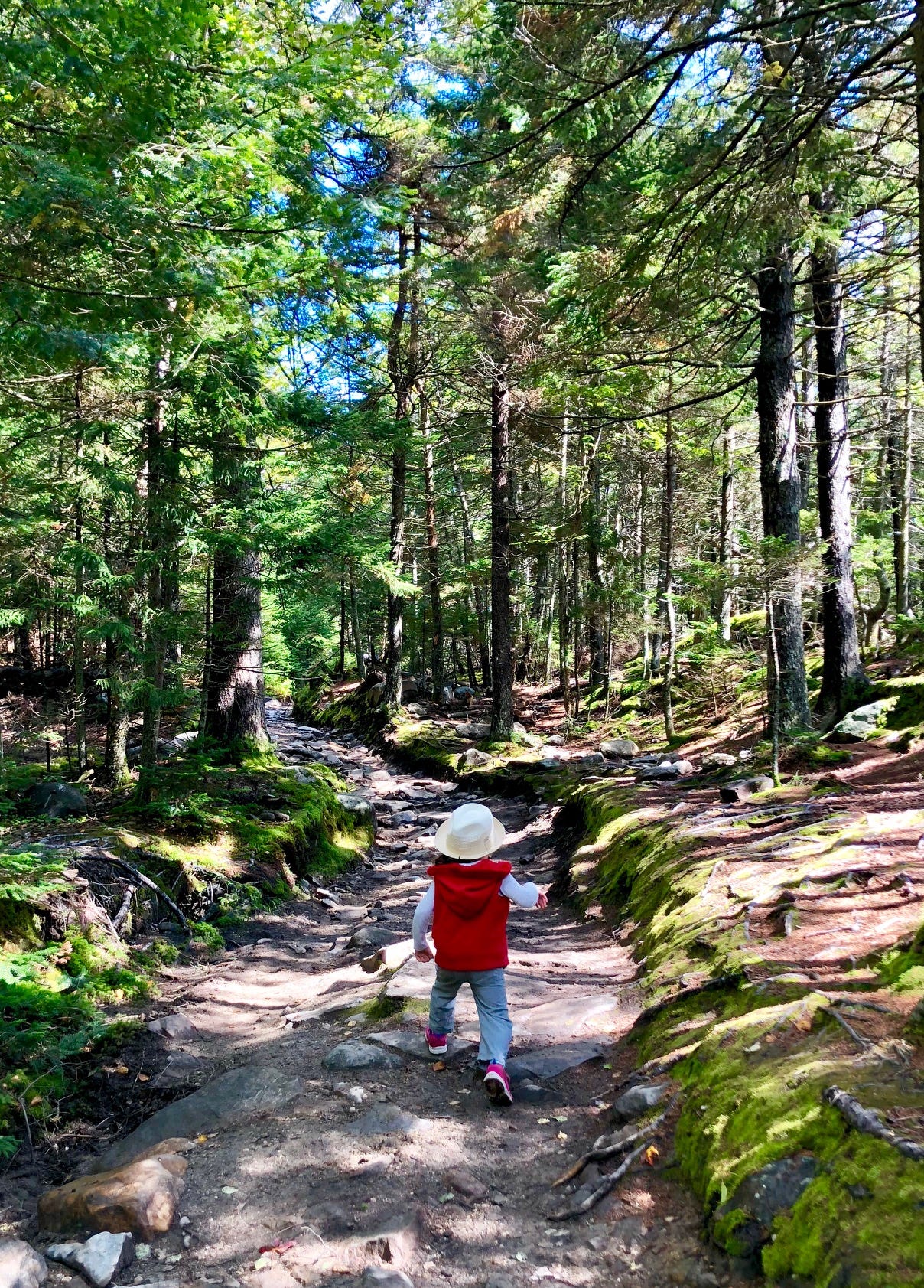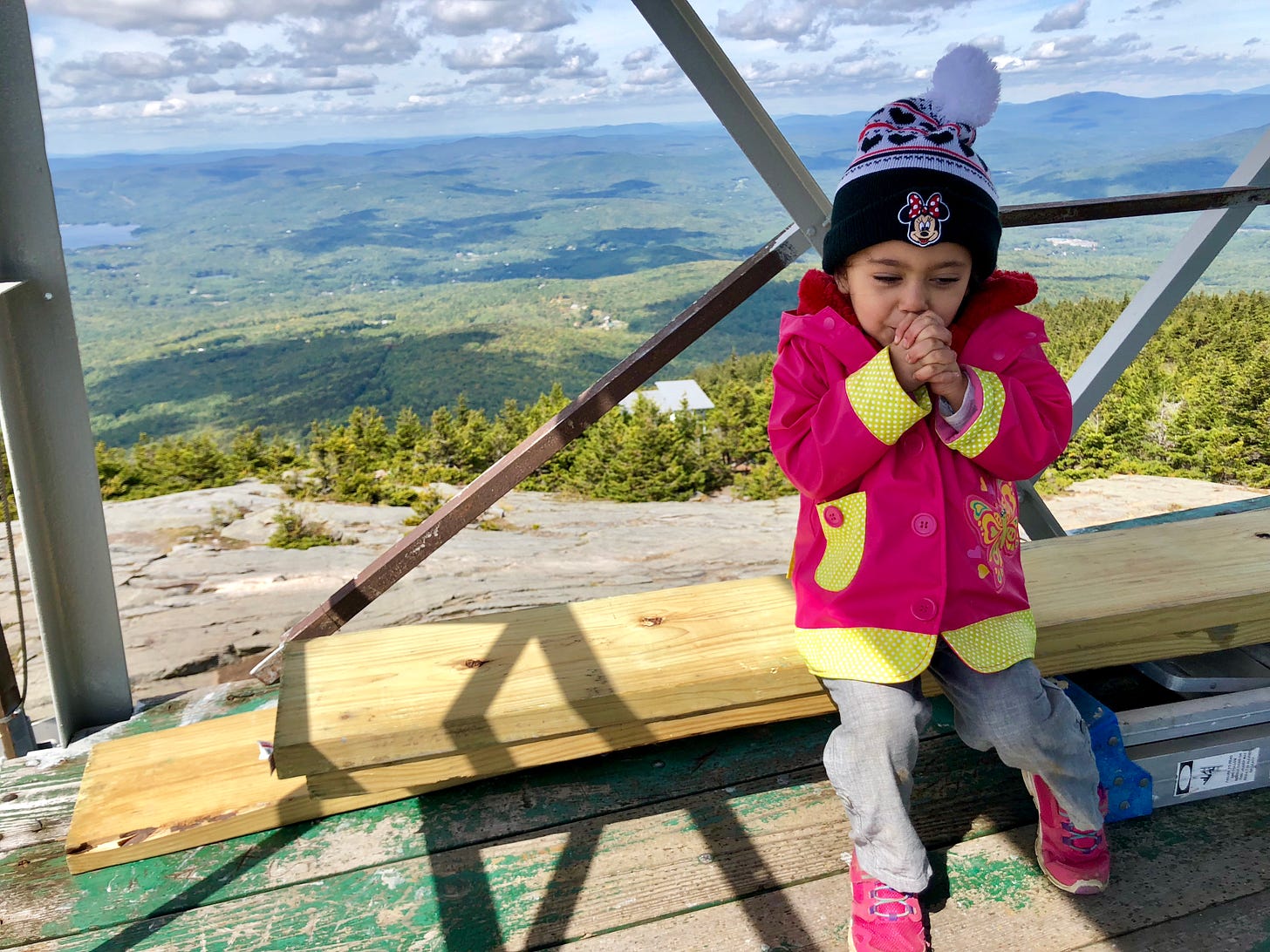Welcome to Week Four, Chapter Three of Where There’s Smoke: On the Trail to New Hampshire’s Fire Towers, a weekly Wednesday publication brought exclusively to subscribers of Day By Day. We hope you enjoy this old is new memoir of a father and daughter’s adventure to all of the Granite State’s active lookouts. And while you all are getting these chapters first and we won’t be sharing across networks, the link is open should you want to share or pass on to someone who you think would be interested in subscribing. Please like and comment and let’s make this run a success!
If you’d like to catch up first, here’s a link to last week’s Introduction and a link to Chapter One and Chapter Two. See you in the tower!
Battle of the Frogs
#3 Mt. Kearsarge Fire Tower, Warner
We are having a moment.
And by we, I mean, three sets of parents or guardians, and five little hiking girls, maybe between four and eight years old.
At about 2,500 feet up the southern face of Mount Kearsarge, the group of hiking girls, including Uma, have converged on a late summer vernal pool filled with dozens of wood frogs.
The pool, maybe a seven-by-seven square, sits in a low scrubby area just below the mountain’s summit cone. The frogs lounge and stretch, some on little logs, others floating with their glimmering heads just above the dark water. A gentle breeze keeps the bugs away from this little muddy slice of heaven and the frogs are so docile, Uma and the other girls are literally able to pet them.
“Daddy,” Uma whispers, looking over her shoulder, “watch!”
She runs a forefinger over the wet head of a nearby frog and all the little hiker girls giggle. Myself and the other parents are grateful for this small respite of calm. Mount Kearsarge is a real climb, a complicated hike with exposure to the elements and true New Hampshire trails of rock and roots. This is a first for Uma and she’s walked in a sort of daze, half enthused by this strange territory and half horrified at having to work so much harder than previous hikes to get to the open summit tower above.
There’s a three-and-a-half-mile auto road that ends about a half mile from the summit, starting in Rollins State Park, but despite parking that close to the summit, Kearsarge tests hikers.
So, the parents are happy for the break near the top of this historic mountain, while the girls and the frogs reach a mutual détente and all are in connection with the natural world.
And then the boys show up.
Three little hiking guys, about the same ages as the girls arrive, grab some sticks and with no hesitation at all, charge the pool and begin swinging at the frogs. Chaos ensues! The girls all begin to scream and scatter. The frogs leap for cover, this way and that. I grab Uma before she plunges into the pool and parents charge about, trying to recover their children.
There’s a great amount of literature written about the supposed innate differences between boys and girls, about how boys are hard-wired for aggression and energy while girls tend to gravitate toward cooperation and empathy. Recent research paints a different picture, however.
In her book Pink Brain, Blue Brain, professor of neuroscience Lise Elliot, writes about the concept of Neural Plasticity. She suggests that toddlers and little kids aren’t born one way or another, but rather their brains become hardwired based on how they’re treated and how adults interact with them, like a vicious circle of expectations. Parents think their boy or girl are born with certain traits so they treat them as such and the kids begin to actual develop those traits. Girls are expected to be gentle, so parents treat them more gently. Boys are expected to be more aggressive, so parents rough house more with them.
In every little moment with our little behavior sponges, we are, perhaps, imprinting their character, how they respond to outside input, how they react to a pool full of frogs. The responsibility is overwhelming.
For now, I manage to separate Uma from the pack and we’re once again heading up.
Before long, through a small series of zigs and zags, and one steep climb up a rocky slope, we achieve the summit cone about 100 feet west of the fire tower. There’s been a tower atop Mount Kearsarge for years before the state parks on either side of the mountain had been established. The tower has had a phone line since 1933. For many years, there was a hotel on the summit. And in the rocks near the tower, the legendary lookout Otto Davis carved the yearly date next to his name on the summit ledges; the last date being 1990.
But my daughter knows nothing of this and doesn’t even appear to be interested in the tower, shimmering in the blue-sky day. She steps slowly up to a nearby ledge, the summit wind threatening to lift her sunhat off her head, and looks out over the forest. She spins fully around.
“Daddy, look,” she says pointing.
I knee down next to her and follow her finger.
“What do you see, baby?”
“Just look!”
And I realize she’s not point at any one thing, but rather at everything. She’s pointing at the view, this place of height and long-sight, a rock visited but hundreds of thousands of people over the years. And now, a small girl, far above the treetops, experiencing, perhaps, her first real moment of awe.
The great New Hampshire poets Donald Hall and Jane Kenyon both wrote often about Kearsarge. The mountain cast a shadow over the front porch of their famous farmhouse in Wilmot. But one of Hall’s most well known poems, “Mount Kearsarge,” was actually written before the two moved into Hall’s ancestral home, at a time when he thought he’d never get a chance to live here and to see his mountains regularly.
In the poem, he treats the mountain like a specter, calling it a ghost, turning his back on the blue top of the hill. But to no avail. No matter how much he tries to distance himself, in the end, “Kearsarge, I close my eyes and you rise inside me.”
The mountain won’t lose its grip on him. Kearsarge won’t let him go. I don’t even bother asking Uma if she wants to head up to the tower. We’ll get there eventually. When she’s ready. We’ll get there once this view and this mountain has planted that same longing in her heart.
I sit down on the warm rock next to her and my daughter pulls herself away from the views only long enough to sit in my lap. And there we stay for a while, surrounded by the great blue ghost, tower forgotten.
Mount Kearsarge South, Wilmot / Warner (Elevation 2,937 feet)
Location and Directions: The tower can be reached from the north or from the south. From the north, your destination is Winslow State Park in Wilmot, exit 10 off the I-89. The trail from the parking area at the end of the road is 1.1 to the summit. From the south, there is a carriage road and a trail from Rollins State Park in Warner. The road is about 3.5 miles and then another .5 up a trail will get you to the summit. Kearsarge Mountain Road of 103 in Warner will get you there the quickest.
Our Route: We drove up the state park road and parked in a small lot below the summit. Standard park fee is $2-$4 for a car, but call ahead for hours and be prepared for a crowd on weekends and holidays. The road doesn’t operate during winter. Once parked we hiked up the Rollins Trail, total mileage up and back, 1 mile.
If You Go: There’s nothing quite like Mount Kearsarge for the views. With a state park on either side, there’s plenty of opportunity for picnicking and play. Make a day of it! Just be aware that the gates to the park roads on both sides close at a certain point making the hikes much longer. Call ahead.
Special Update Note: It’s worth mentioning that due to an extraordinary happenstance, we came down off Kearsarge just as fabulous mother and daughter authors Rebecca and Adi Rule were having a book event in Warner, just at the foot of the mountain. We attended and were able to capture the moment in one of my favorite all time pictures!











Gotta watch them Un Rulelee hikers! I can vouch that they are the best trivia buddies!
Thank you for the noon respite. I enjoyed it!